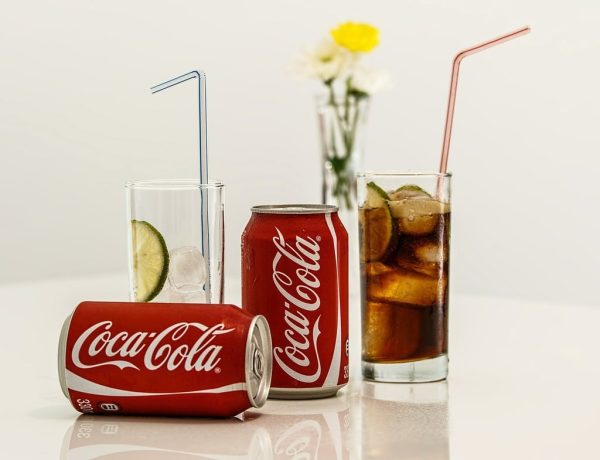Red number 40 – it’s a chemical you may have heard of, but few actually care to learn more about it. It’s used in almost all of your favorite red snacks and beverages like Twizzlers, Doritos, Cheetos, and M&M’s.

It’s even added to foods you wouldn’t expect, like Coca Cola and hummus dips. But there’s something you need to know about Red 40 before you buy chips the next time you visit the grocery store. Red 40 is a chemical that many companies use to add appeal to their food. For many companies, they use it to exaggerate the red color of their food, though it’s been speculated on the internet that these companies have far worse intentions.
Adverse Effects
What companies don’t want you to know about their dye is that it directly contributes to chronic inflammation. According to the National Institutes of Health (NIH), “Red-40 causes inflammation in the distal colon and rectum of the A/J mouse model.” In addition to this, many people reportedly avoid food with the chemicals in it because they feel drowsy from it.

Regardless of substantial evidence, the negatives of Red 40 don’t come without opposition. Even the Food and Drug Administration (FDA) still stated it was safe for human consumption as of 2019. Additionally, many people point out a flaw in the anti-dye argument. Many people have falsely spread information that Red 40 causes cancer, but only Red 3 has been linked to causing cancer. As such, opponents of the anti-dye movement have used this to say food dyes are safe and not a big deal. However, in a plethora of European countries, they have strict regulations that companies must warn about the dye’s effects on children. As the public in the U.S. has become more aware of the stance taken in Europe, the issue has circulated more and more. Some people have taken very specific concern to how the ingredients change once you leave US borders. For example, in the U.K. a bag of M&Ms only contains Blue 1, but in the US you’ll find Blue 1, Yellow 6, Red 40, & Yellow 5.
False Claims
Some companies took notice of public concern over this and claimed they would take action.

Kellogg had pledged in 2015 to remove artificial dyes from their foods by 2018, but if you walk into a U.S. grocery store or look at store websites and you look at the back of a box of Apple Jacks the dyes are still used. Additionally, the dyes are still used in most other Kellogg’s foods, like Fruit Loops.

However, if you look at other countries, they’ve made changes to their ingredients to avoid putting warning labels on their food. Actress Eva Mendes made a statement on Instagram regarding the dye differences. She said, “They don’t use these harmful ingredients in other countries – it’s time for them to do the right thing for American children!” Mendes has backed up many petitions against Kelloggs, one of which was this October at the Kellogg’s headquarters. These protests have been peaceful, and people have been using their voices to advocate for their children’s safety. Lucky for us, people were listening to them.
Taking Action in California

On October 1st, Governor Gavin Newsom (D-CA) signed the School Food Safety Act. This law, which takes effect towards the end of 2027, will establish bans on Red 40 and 5 other artificial dyes linked to adverse effects. Despite this law, Californian students will still have access to the harmful snacks, as the ban is only in school cafeterias. This ban also is yet to make it clear whether students could still buy the snacks in vending machines outside the cafeteria.
Following the Lead
Other states have also followed in California’s footsteps by introducing legislation of their own onto bills. Currently our neighboring states Pennsylvania and West Virginia are taking action. In Pennsylvania the legislation is still being decided in the house. The hope for many anti-artificial dye proponents in Ohio is that the bill will pass and then spread the movement to Ohio.
National Action
The FDA is taking a look at Red 40 again following a decade of silence on the issue. The re-evaluation comes as a response to other dyes evaluations and the recent petitions starting in October.

NBC explains that we could see even more action with Robert F. Kennedy Jr. being health secretary in 2025. Kennedy was previously very open about his concerns over the chemical. However, as of November, NBC expressed he may face difficulty trying to pass any regulations as there appears to be a lack of funds.
However, according to Trump it doesn’t appear he’ll let financial issues get in the way. Trump spoke in November on some of RFK Jr’s ideas and expressed that he firmly believes that “He’s going to help make America healthy again,” and he went on to say “He wants to do some things and we’re going to let him go do it.”
With Trump’s support of RFK Jr., proponents have become more motivated than ever. Despite the speed of the movement to ban the dyes, the FDA doesn’t appear to be looking at removing the dye from items other than snacks. Presumably this is because the belief is that mainly children are affected by the chemical, and as such, foods they eat are a higher priority. Adding onto concerns, The Center for Science in the Public Interest claims children consume 100 mg to 200 mg of artificial dyes a day. That, combined with the high quantity of Red 40 being used, puts kids easily over the safety limit of 7 mg. As such, the concern for children’s safety seems justified.
What Could a National Ban Mean for Mentor?
It’s unlikely that current high school students will see the impact of a nationwide ban. This is because looking at other bans, they were enacted in 2024 but will not take place until 2027 or later. Additionally, we can’t foresee a nationwide ban coming quickly, as the decision would first have to receive approval by the FDA and possibly even more officials. Also, the initial approval won’t come until the evaluation of all 36 FDA-approved dyes.
But for students who expect to stay in Mentor Schools for the next four or more years, it’s possible that some of their favorite snacks would no longer be available. For example, at the high school, many snacks with food dyes are available; this includes Doritos, Gatorade, and more. Despite that, some snacks would certainly be here to stay, like baked chips, Propel water, and other favorites. Also, it’s currently unclear whether a ban would prevent students from bringing snacks into the building. It’s possible that the ban could be treated much like allergen safety rules, where students are asked to leave those snacks at home for the safety of their peers.
Learn More From Both Sides
Again, this issue is still highly debated, as many tests for food dyes are conducted on animals instead of people. If you’d like to learn more, check out both of these links to get a better perspective of both sides of the issue: Toxicology of Food Dyes & Food Dyes: Harmless or Harmful?













